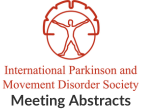Negative dystonia of the palate: Mutation in the THAP1 (DYT6) gene found in a 42 years old patient
Objective: To highlight that the new clinical entity called "negative dystonia of the palate" recently described is probably more a new clinical presentation of a…Deep brain stimulation in three patients with dystonia and severe cerebellar atrophy
Objective: To describe the outcome of Deep Brain Stimulation (DBS) in patients with dystonia and prominent cerebellar atrophy. Background: There is increasing evidence supporting the…Cervical dystonia and quality of life
Objective: To evaluate appearance of depression and anxiety in patiens with cervical dystonia and influence of dystonia symptoms on the quality of life. Background: Cervical…Neck proprioception is impaired in patients with idiopathic cervical dystonia
Objective: To investigate whether proprioceptive information generated from the neck is impaired in patients with idiopathic Cervical Dystonia (CD). Background: CD is a focal dystonia…The writer’s cramp and its connections with sensory deficits
Objective: To determine whether difficulties in motor or perceptive anticipation are present in writer's cramp and are specific to writing or also observed during other…Incidence of dystonia in patients with progressive supranuclear palsy
Objective: To study the frequency of dystonic symptoms in progressive supranuclear palsy (PSP). Background: Progressive supranuclear palsy (PSP) is an uncommon brain disorder that affects…DYT16/PRKRA founder mutation causes childhood-onset generalized dystonia in a family from southern Italy
Objective: To describe a family with three siblings affected by the combination of dystonia and parkinsonism, as a resulting phenotype of recessive PRKRA mutation. Background:…Perception of the visual vertical is not impaired in patients with idiopathic cervical dystonia
Objective: To investigate whether the perception of the visual vertical is intact in patients with idiopathic Cervical Dystonia (CD). Background: Idiopathic CD is a focal…Subtle sensory abnormalities in patients with segmental and cervical dystonia detected by quantitative sensory testing
Objective: The aim of this study was to investigate whether sensory abnormalities in patients with primary dystonia are related to age and to the distribution…The impact of a movement disorders specialist on resident knowledge, as measured by the resident in-service training examination (RITE)
Objective: To determine a movement disorders specialist's impact on resident education, as assessed by the Resident In-Service Training Examination (RITE) scores. Background: Neurology resident knowledge…
- « Previous Page
- 1
- …
- 37
- 38
- 39
- 40
- 41
- 42
- Next Page »
